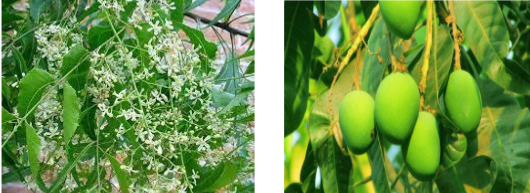
India has a rich culture of festivals, food, and traditions. Every festival brings happiness and prosperity to people living here. Besides this, these festivals also enclose the hidden scientific traditions within them. One of them is Ugadi or Yugadi which is very famous in southern states of India, Including Telangana, Karnataka, and Andhra Pradesh. This festival is a concoction of sweet and sour memories which keeps people together to celebrate this amazing festival with pomp and joy.
Not only in southern states, but it is also being celebrated in various states with a different name such as “Gudi Padwa” in Maharashtra, “Bihu” in Assam, “Vaisakhi” in Punjab, “Pana Sankranti” in Odissa, “Puthandu” in Tamil Nadu, “Vishu” in Kerala and “Naba Barsha” in West Bengal. Ugadi itself means the beginning of new age and has been celebrated every year according to the Hindu lunar calendar in March-April.
On the day of the Ugadi, there is a tradition to chant some quotes from Bhagavad Gita, they are as follows:
Shathayu Vajra Dehaya Sarva Sampath Karaya Cha ||
Sarvaarista Vinashaya Nimbakam Dala Bhakshanam||
This shloka symbolizes that consume neem leaves to achieve a healthy body, gain wealth, destroy negativity.
“Sukha Dukhe Same Kruthva
Labha Labhav Jayaa Jayav”
The meaning of the above shloka is that whether sadness or happiness, gain or loss, win or lose, all these aspects of life should be treated equally.
Jasmine flowers and mango leaves are often seen on the doors. Jasmine flowers keep our minds calm as well as mango leaves keep the airborne diseases away. Moreover, there is one special dish “Ugadi Pacchadi” is being made which is very special and has very unique flavors.
Ugadi Pacchadi incorporates all of the distinctive flavors, symbolizing the fact that life is a combination of them. Jaggery depicts “happiness,” while salt represents “life’s interests.” Tamarind, which has a sour taste, represents “challenges,” while neem flowers, which are known to have a bitter taste, indicates the “difficulties in life” Raw mango, or tangy flavor, is associated with “surprises or unexpected obstacles,” while chilli powder, or fiery flavor, is associated with “angry moments” in one’s life.
Ugadi pachhadi is supposed to be consumed early in the morning and the body gets acclimatize to all six tastes. All these six rasas in one food helpful to face adversities, happiness ,and different moods of life. These ingredients are playing a wonderful role in the dish besides giving flavor to the dish it also provides various health benefits like Jaggery helps in increasing the Haemoglobin level high, Tamarind provides an ease to the digestion process & also helps in reducing the inflammation in the body and lowers the cholesterol level, Raw mango enhances the elasticity of the blood vessels & provide relief from chest burn due to acidity, last but not least, Neem is the show stopper of the dish, people always wonder that how these bitter neem flowers provide the balanced taste to the dish without making the entire dish bitter. Neem contains anti-fungal, anti-bacterial, anti-toxic properties, it is often used in villages to cure chickenpox and viral fevers, people used to call it the “pharmacy of the village”.
Life is a harmonious mix of all emotions with different experiences. It contains happiness and sorrows with sweet memories but we need to achieve our goal with concentration. Though life is unpredictable and has so many flavors which we taste time by time, this unique festival teaches us how to balance every flavor of our experiences in our lives whether it is sweet, bitter, or sour. Cultural diversities help us to understand and learn about various aspects of life
Dr N.K. Prasanna is a Scientist at CSIR-National Institute of Science Communication and Information Resources (CSIR-NISCAIR), New Delhi. Reach out to Dr. Prasanna at prasanna@niscair.res.in.


